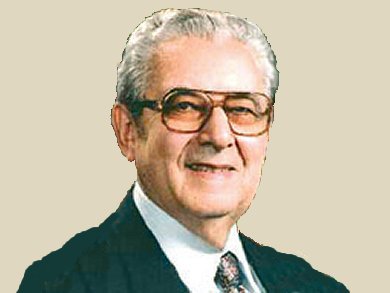May 22nd marks the 100th anniversary of the birth of Nobel Prize winner Herbert C. Brown. Brown is best known for his work on the application of boron reagents to organic chemistry and as the co-discoverer of sodium borohydride with Hermann Irving Schlesinger.
Throughout his scientific career, Brown examined a variety of topics in physical, inorganic, and organic chemistry. His studies on aromatic substitution led to a quantitative theory based on the new Brown δ+ constants and he played an active role in the “nonclassical carbonium ion” debate that polarized the physical organic community in the 1970s.
Brown’s greatest contributions, however, and those for which he won the Nobel Prize, were in the application of boron reagents in organic chemistry. In 1956, he observed that the reduction of ethyl oleate by sodium borohydride in the presence of aluminum chloride consumed more hydride than expected. Further studies established that the addition of diborane to alkenes was catalyzed by ethers. This prompted Brown to explore the preparation and use of organoborane reagents and standardized procedures for hydroborations were soon developed.
The impact of hydroboration became apparent in 1961 with the discovery of the high enantioselectivities in the hydroboration of alkenes using (–)-diisopinocamphenylborane [(Ipc)2BH] (pictured), which heralded the birth of asymmetric synthesis.

This was the first time that simple chiral reagents of low molecular weight had been shown to be capable of inducing levels of enantioselectivity that had previously belonged exclusively to the domain of enzymes.
This is the answer to Guess the Chemist (5), which covered Herbert C. Brown’s life and career.
- Organic Syntheses via Free-Radical Displacement Reactions of Organoboranes,
Herbert C. Brown, M. Mark Midland,
Angew. Chem. Int. Ed. 1972, 11(8), 692–700.
DOI: 10.1002/anie.197206921 - Some recent applications of hydroboration/organoborane chemistry to heterocycles,
Herbert C. Brown and Milind V. Rangaishenvi,
J. Heterocyclic Chem. 1990, 27(1), 13–24.
DOI: 10.1002/jhet.5570270102 - The Critical Importance of Water in the Asymmetric Allylboration of N-Trimethylsilylbenzaldimines with B-Allyldiisopinocampheylborane,
Guang-Ming Chen, P. Veeraraghavan Ramachandran and Herbert C. Brown,
Angew. Chem. Int. Ed. 1999, 38(6), 825–826.
DOI: 10.1002/(SICI)1521-3773(19990315)38:6<825::AID-ANIE825>3.0.CO;2-V
Also of interest:
- Herbert C. Brown (1912–2004): Organoboranes,
George W. Kabalka,
Angew. Chem. Int. Ed. 2005, 44(19), 1438.
DOI: 10.1002/anie.200500286




